December 28th Scots Book of Days. A.D. 2 The Holy Innocents feast day.
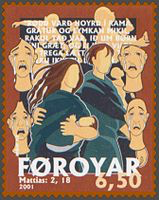 December 28 – 2 The Holy Innocents feast day.
December 28 – 2 The Holy Innocents feast day.
The scream from Ramah, 2001 stamp of the Faroe Islands. The Faroes (Denmark) lie 200 miles north of Scotland, latitude 62 degrees north.
1307 sometime in December- Battle of Slioch.
1547 sometime in, 5,000 English who overran Dumfriesshire, sacking the Clan Jardine lands and forcing John Jardine of Applegirth to yield.
1556 sometime in, William Cochrane, chief of Clan Cochrane obtained a charter of confirmation for the lands of Cochrane from Mary, Queen of Scots.
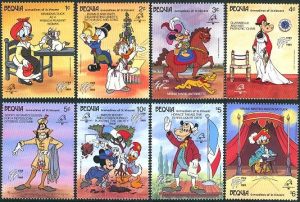 1647 a faction of Scottish Covenanters sign The Engagement with Charles [later styled First]. The accession of Charles I (1625–1649) brought about a complete change in the religious scene in that the new king used his supremacy over the established church “to promote his own idiosyncratic style of sacramental Kingship” which was “a very weird aberration from the first hundred years of the early reformed Church of England”. King Charles questioned “the populist and parliamentary basis of the Reformation Church” and unsettled to a great extent “the consensual accommodation of Anglicanism”(Davies 1992, p. 2,3) and this led to the Civil War and republican Commonwealth. Wikipedia
1647 a faction of Scottish Covenanters sign The Engagement with Charles [later styled First]. The accession of Charles I (1625–1649) brought about a complete change in the religious scene in that the new king used his supremacy over the established church “to promote his own idiosyncratic style of sacramental Kingship” which was “a very weird aberration from the first hundred years of the early reformed Church of England”. King Charles questioned “the populist and parliamentary basis of the Reformation Church” and unsettled to a great extent “the consensual accommodation of Anglicanism”(Davies 1992, p. 2,3) and this led to the Civil War and republican Commonwealth. Wikipedia
1655 – Charles Cornwallis, 3rd Baron Cornwallis, born, First Lord of the British Admiralty (d. 1698). Descendant marries Cochrane.
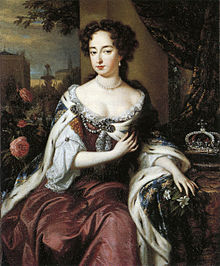 1694 Mary II Stewart (wife of William 2nd of Scotland) died Kensington Palace, England aged 32. In late 1694, Her Majesty The Queen contracted smallpox. She sent away anyone who had not previously had the disease, to prevent the spread of infection. Anne, who was once again pregnant, sent Mary a letter saying she would run any risk to see her sister again, but the offer was declined by Mary’s groom of the stole, the Countess of Derby. Mary died at Kensington Palace shortly after midnight on the morning of 28 December. (Bleeding was the treatment of choice for all fevers, to release bad humours, and undoubtedly weakened the Queen, or killed her).
1694 Mary II Stewart (wife of William 2nd of Scotland) died Kensington Palace, England aged 32. In late 1694, Her Majesty The Queen contracted smallpox. She sent away anyone who had not previously had the disease, to prevent the spread of infection. Anne, who was once again pregnant, sent Mary a letter saying she would run any risk to see her sister again, but the offer was declined by Mary’s groom of the stole, the Countess of Derby. Mary died at Kensington Palace shortly after midnight on the morning of 28 December. (Bleeding was the treatment of choice for all fevers, to release bad humours, and undoubtedly weakened the Queen, or killed her).
Mary in 1685. A week before her death, Mary went through her papers, weeding out some which were burnt, but her journal survives, as do her letters to William and to Frances Apsley.
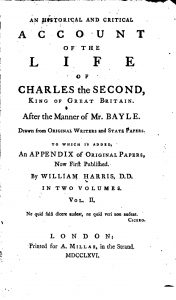 1706 Pierre Bayle (18 November 1647 – 28 December 1706) was a French philosopher and writer best known for his seminal work the Historical and Critical Dictionary published beginning in 1695. William Harris historian. Printer Andrew Milalr VI (clan Stewart, Lockhart, Hunter).
1706 Pierre Bayle (18 November 1647 – 28 December 1706) was a French philosopher and writer best known for his seminal work the Historical and Critical Dictionary published beginning in 1695. William Harris historian. Printer Andrew Milalr VI (clan Stewart, Lockhart, Hunter).
An Historical and Critical Account of the Life of Charles the Second, King of Great Britain after the Manner of Mr. Bayle, etc. London Printed for A. Millar in the Strand. MDCCLXVI
1715 – William Carstares, Scottish minister (b. 1649) died.
1734 – Rob Roy MacGregor died. ‘Far and near, through vale and hill,– Robert Roy MacGregor, Scottish folk hero (b. 1671)
Are laces that attest the same,
And kindle like a fire new stirr’d
At sound of Rob Roy’s name.’
‘There had been a long and bloody feud betwixt the MacGregors and the Laird of Luss, head of the family of Colquhoun,
- Colquhoun of Luss 1329 2Murray2Drummond 2Hamilton2Stewart 2Miller2Simmons 2Choate zoe
a powerful race on the lower part of Loch Lomond. The MacGregors’ tradition affirms that the quarrel began on a very trifling subject. Two of the MacGregors being benighted, asked shelter in a house belonging to a dependant of the Colquhouns, and were refused. They then retreated to an out-house, took a wedder from the fold, killed it, and supped off the carcass, for which (it is said) they offered payment to the proprietor. The Laird of Luss seized on the offenders, and, by the summary process which feudal barons had at their command, had them both condemned and executed. The MacGregors verify this account of the feud by appealing to a proverb current amongst them execrating the hour {Mult dhu an carbail ghiT) that the black wedder with the white tail was ever lambed. To avenge this quarrel the Laird of MacGregor assembled his clan, to the number of three or four hundred men, and marched towards Luss from the banks of Loch Long, by a pass called Raid na Gael, or the Highlandman’s Pass…’ Sir Walter Scott’s introduction to his “Rob Roy”,
http://dailysirwalter.blogspot.com/
Portrait engraving of Rob Roy circa 1820s (a century late). Rob Roy is anglicised from the Scottish Gaelic Raibeart Ruadh, or Red Robert.
1751 Meeting between Henry Fielding and John Hill to discuss the proposed Paper War of 1752–3 is believed to have occurred (if it occurred) on 28 December 1751. Hill met Fielding for legal business between 26 December and 28 December 1751 after Hill was robbed.
1798 The title of Astronomer Royal for Scotland was created in 1834 and formally linked with the post of Regius Professor of Astronomy in the University of Edinburgh. Thomas Henderson b. Dundee, Scotland 28 December 1798 d. Edinburgh, Scotland 23 November 1844. Appointed by Royal Warrant of 18 August 1834 and held office September 1834-23 November 1844. Age on appointment: 35
1832 – John C. Calhoun becomes the first Vice President of the United States to resign. Caldwell, Martha (d. 1802) of America, Mother of John Caldwell Calhoun (1782—1850) ‘’Sister Lucy Bigelow Young went Forth into the font and was Baptized, … Eminent women of the world… .There were Baptized in all to day 682” (Woodruff, Journal 7:367-69)–Arnold K. Garr, Epilogue, Christopher Columbus, p. 71-73.
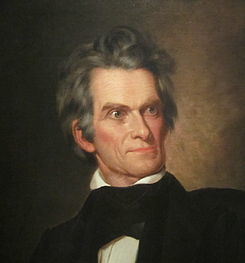 John C. Calhoun as he appears at the National Portrait Gallery in Washington, D.C. 7th Vice President of the United States. 16th United States Secretary of State, 10th United States Secretary of War, United States Senator from South Carolina, Member of the U.S. House of Representatives from South Carolina’s 6th district. Calhoun’s alma mater, Yale University, named one of its undergraduate residence halls “Calhoun College” where his signature also appears in the member log book of Yale College chapter of Phi Beta Kappa, in 1804. Which register also later was signed by his [Pickens] cousins Molly Lenore Choate and [Pickens in law] Tova Ann Leigh Choate in 1996.
John C. Calhoun as he appears at the National Portrait Gallery in Washington, D.C. 7th Vice President of the United States. 16th United States Secretary of State, 10th United States Secretary of War, United States Senator from South Carolina, Member of the U.S. House of Representatives from South Carolina’s 6th district. Calhoun’s alma mater, Yale University, named one of its undergraduate residence halls “Calhoun College” where his signature also appears in the member log book of Yale College chapter of Phi Beta Kappa, in 1804. Which register also later was signed by his [Pickens] cousins Molly Lenore Choate and [Pickens in law] Tova Ann Leigh Choate in 1996.
- Marnock Banfshire and the Gospel of Jesus Christ. Samuel Mulliner (b. 1809), and Alexander Wright (b. 1804), Scots, arrive as missionaries. [Ensign Feb. 1987]. Alexander arrived three days later, having walked more than one hundred miles through winter storms. The family “did not [k]now me on account of the pox,” but strangely he had no further sickness or pain, and the eruptions eventually cleared up.
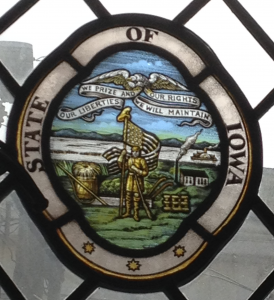 1846 Iowa becomes a state, with Scottish names as follows-
1846 Iowa becomes a state, with Scottish names as follows-
Adams, Albany, Allerton, Alloway Creek, Anderson, Andrews, Angus, Argyle Arlington, Armstrong, Ashton, Avon, Ayrshire, Barclay, Barnes, Bell Creek Belmont, Berwick, Blaine, Blairsburg, Blairstown, Bloomfield, Bluebell Creek, Brighton, Brookfield, Bruce, Buchanan County, Burnett Creek, Burnside, Caledonia, Cameron, Campbell Creek, Ceres, Charleston, Clayton, Clyde, Collins, Coulter, Covington, Craig(s), Crawford, Crawfordsville, Crombie, Dale, Dallas, Dean, Dewar, Douglas Township, Dumfries, Dunbar, Duncan, Dundee, Dunlap, Dysart, Edinburg, Elgin, Elrick Junction, Fairfield, Fraser, Fulton,Garfield , Gifford, Glasgow, Glenwood, Grant, Greenfield Hamilton, Harris, Henderson, Hepburn, Highland Township, Howe, Humeston, Jamestown, Kennedy, Kingston, Kinross, Kirkville, Lake MacBride Lamont, Lee, Lenox, Leslie, Lewis, Littleton, Livingston, Loch Ayr, Loch Burns, Logan, Lynn, Lyon, MacKey, Magill Creek, Malcom, Marshall, Maud, Maxwell, McCallsburg, McCausland, McClelland, McClure Creek, McCreath Creek, McFarland Park, McGregor, McGruder Creek, McIntire, McIntosh Woods State Park, McMaster Creek, McNeil Ditch, McPherson, Melrose, Midland, Milton, Monroe, Montrose, Morningside, Morton, Mount Ayr, Mount Sterling, Mount Vernon, Murray, New Albany, New Hope, Newark, Newport, Newton, Northfield, Oakley, Oakwood, Ossian (Ossian), Paton, Patterson, Piper, Preston, Ralston, Riverside, Rock Glen, Rose Hill, Ross, Ruthven, Scotch Grove, Scotch Glen, Scott, Scott County, Scott, Sinclair, Springfield Township, St. Marys, Stanhope, Stanley, Sterling, Stewart Creek, Stuart, Tennant, Thompson, Thornton, Union Grove State Park, Waverly, Westfield, Weston, Westport, Wick, Williamson, Wilton, Woodland
State of Iowa We prize our liberties and our rights we will maintain, stars and stripes farm
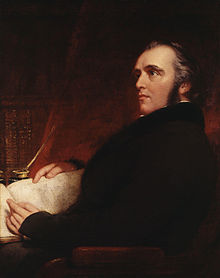 1859 – Thomas Babington Macaulay, died, British poet (b. 1800). “I will here say that two weeks before I left St. George, the spirits of the dead gathered around me, wanting to know why we did not redeem them. Said they, ‘You have had the use of the Endowment House for a number of years, and yet nothing has ever been done for us.’’ “(Wilford Woodruff, JD 19:229, September 16, 1877.)
1859 – Thomas Babington Macaulay, died, British poet (b. 1800). “I will here say that two weeks before I left St. George, the spirits of the dead gathered around me, wanting to know why we did not redeem them. Said they, ‘You have had the use of the Endowment House for a number of years, and yet nothing has ever been done for us.’’ “(Wilford Woodruff, JD 19:229, September 16, 1877.)
MacAulay Crest: A boot couped at the ankle and theron a spur Proper. Motto: DULCE PERICULUM.
[from Latin: “Danger is sweet”] . or “Sweet danger”].
Badge: pine (Scots fir), or cranberry
. or “Sweet danger”].
Badge: pine (Scots fir), or cranberry
Macaulay by John Partridge.
1861 The Morrill Tariff act discussed. On December 28, 1861 Charles Dickens published a lengthy article which blamed the American Civil War on the Morrill Tariff:
If it be not slavery, where lies the partition of the interests that has led at last to actual separation of the Southern from the Northern States? …Every year, for some years back, this or that Southern state had declared that it would submit to this extortion only while it had not the strength for resistance. With the election of Lincoln and an exclusive Northern party taking over the federal government, the time for withdrawal had arrived … The conflict is between semi-independent communities [in which] every feeling and interest [in the South] calls for political partition, and every pocket interest [in the North] calls for union … So the case stands, and under all the passion of the parties and the cries of battle lie the two chief moving causes of the struggle. Union means so many millions a year lost to the South; secession means the loss of the same millions to the North. The love of money is the root of this, as of many other evils… [T]he quarrel between the North and South is, as it stands, solely a fiscal quarrel.
Morrill sponsored the anti-bigamy act to attack the Church of Jesus Christ of Latter Day Saints, founded by Joseph Smith Junior (clan Smith of Inverness, descendant of Malcolm and Duncan Kings of Scots).
 1879 – The Tay Bridge Disaster: The central part of the Tay Rail Bridge in Dundee, Scotland collapses as a train passes over it, killing 75.
1879 – The Tay Bridge Disaster: The central part of the Tay Rail Bridge in Dundee, Scotland collapses as a train passes over it, killing 75.
Map of the Firth of Tay, Dundee and the rail bridge, all facing the North Sea.
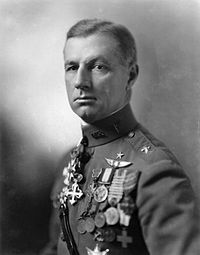 1879 – Billy Mitchell, born, American military aviation pioneer (d. 1936). His grandfather Alexander Mitchell, a Scotsman, was the wealthiest person in Wisconsin for his generation and established what became the Milwaukee Road along with the Marine Bank of Wisconsin.
1879 – Billy Mitchell, born, American military aviation pioneer (d. 1936). His grandfather Alexander Mitchell, a Scotsman, was the wealthiest person in Wisconsin for his generation and established what became the Milwaukee Road along with the Marine Bank of Wisconsin.
Brigadier General Billy Mitchell, United States Army Air Service. The Billy Mitchell Institute sponsors research for the Air Force Association.
1911 On December 28, 1911, Texas governor Colquitt held a meeting for “all persons interested, and who had any information they could give me, about the Alamo as it stood at the time of the butchery of Travis and his men”.
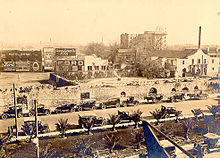 The Alamo and surrounding area c. 1920. In the center are the remains of the “Long Barracks” which had been covered by the Hugo and Schmeltzer building. In 1847, Colonel James Harvey Ralston (clan Ralston), late Judge of Hancock County Illinois, was US Army commander in San Antonio and ordered restoration of the fort.
The Alamo and surrounding area c. 1920. In the center are the remains of the “Long Barracks” which had been covered by the Hugo and Schmeltzer building. In 1847, Colonel James Harvey Ralston (clan Ralston), late Judge of Hancock County Illinois, was US Army commander in San Antonio and ordered restoration of the fort.
1917 – Alfred Edwin McKay, Canadian World War One flying ace (b. 1892) died.
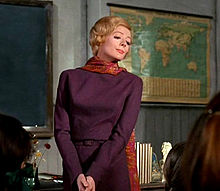 1934 Dame Margaret Natalie “Maggie” Smith, DBE (born 28 December 1934) is an English actress, fictional Professor Minerva McGonagall in the highly successful Harry Potter films, after The Prime of Miss Jean Brodie. She is the daughter of Margaret Smith (née Hutton), a Glasgow-born secretary, and Nathaniel Smith, a Newcastle upon Tyne-born public health pathologist who worked at Oxford University. [As a child, Smith’s parents used to tell her the romantic story of how they had met on the train from Glasgow to London via Newcastle.] Wikipedia
1934 Dame Margaret Natalie “Maggie” Smith, DBE (born 28 December 1934) is an English actress, fictional Professor Minerva McGonagall in the highly successful Harry Potter films, after The Prime of Miss Jean Brodie. She is the daughter of Margaret Smith (née Hutton), a Glasgow-born secretary, and Nathaniel Smith, a Newcastle upon Tyne-born public health pathologist who worked at Oxford University. [As a child, Smith’s parents used to tell her the romantic story of how they had met on the train from Glasgow to London via Newcastle.] Wikipedia
The Prime of Miss Jean Brodie. In 1969, she won the Academy Award for Best Actress for her performance as a Scottish schoolteacher. Then Dame Smith continued teaching at Hogwarts three decades later, with Harry Potter as a star pupil.
1939 Hebrides. Two weeks after colliding with “Duchess”, “Barham” was torpedoed and damaged off the Hebrides by “U-30” (Lt Cdr Lemp)
Merchant Shipping War – Trawlers were the main victims of the first successful attacks by German aircraft off the East Coast. By the end of March they had accounted for 30 vessels of 37,000 tons. Losses from mines remained high – 33 ships of 83,000 tons in December.
Monthly Loss Summary 66 British, Allied and Neutral ships of 152,000 tons in UK waters. www.naval-history.net
1967 – Katharine McCormick, died, American women’s rights activist (b. 1875).
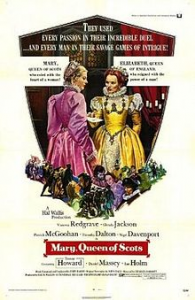 1971 sometime in December, release of – Mary, Queen of Scots is a 1971 Universal Pictures biographical film based on the life of Mary, Queen of Scots. [Remake of 1936 film.]
1971 sometime in December, release of – Mary, Queen of Scots is a 1971 Universal Pictures biographical film based on the life of Mary, Queen of Scots. [Remake of 1936 film.]
Original theatrical poster. Plot. Following the death of her husband Francis II of France, Mary, Queen of Scots (Vanessa Redgrave) returns to her native land. Though fearless, unselfish, and very beautiful, the young queen faces neighbouring England, where the Protestant faith has been embraced by many nobles of Scotland; in addition, the Catholic Mary has to deal with her half-brother James Stewart, Lord Moray’s (Patrick McGoohan) ambitions for rule. He suggests that Mary enjoy herself in Scotland, and pass the time with dancing and feasting. Moray wants to rule Scotland while the lovely but inexperienced Mary becomes a figurehead. Fearing that Mary has ambitions for England’s throne, Elizabeth I of England (Glenda Jackson) decides to weaken her claim by sending her favourite, the ambitious Robert Dudley (Daniel Massey), to woo and marry Mary. She promises that Mary will become her heir if she agrees to the marriage. Sly Elizabeth also sends the younger, dashing but weak Lord Darnley (Timothy Dalton), from a powerful Catholic family. Tempted by the handsome Darnley, Mary impulsively chooses him for marriage. Lord Moray, a Protestant, opposes the marriage, but Mary ignores him. She even exiles Moray to strengthen her own authority. Elizabeth is satisfied that reckless, passionate Mary’s romantic misadventures will keep her busy in Scotland and give shrewd, practical Elizabeth less to worry about. Soon after the wedding, Darnley throws a childish temper tantrum, complaining that he has no real power and is merely Mary’s King Consort. A disillusioned Mary soon banishes Darnley from her bed and frequently consults with the gentle, soft-spoken Italian courtier David Riccio (Ian Holm). Darnley accuses Rizzio of fathering Mary’s expected child (later James 6th of Scotland and James 1st of England).
A group of Scottish lords persuade Darnley to help get rid of Riccio, whom they murder in Mary’s presence. To escape, she persuades Darnley that the plotters will turn against him, and they flee to the safety of Lord Bothwell (Nigel Davenport).
- Bothwell Hepburn 1245 2Montgomerie2Blair 2Cochrane2Miller2Simmons2Choate zoe ToaG
Bothwell has been an ally of Mary since her arrival in Scotland. After he (temporarily) defeats the plotters, Mary forces a truce among their leader Moray, Darnley and Bothwell. Mary gives birth to a son, James 6th , who is expected to succeed both Mary and the unmarried, childless Elizabeth. The peace is short-lived. Darnley still wants power. Darnley is hideously scarred and already ‘dying’ of the pox [symptoms associated with small pox and syphilis – actually it takes decades to die from syphilis]. Mary pities Darnley, but finds herself falling in love with Bothwell. With Moray’s help, they arrange for Darnley to be killed in a gunpowder explosion at his manor. Bothwell marries Mary, and their few brief nights together are blissful. But Moray rejoins the Scottish lords and leads a rebellion against them. He forces Mary to abdicate, and she and her husband are driven into exile, Mary to England and Bothwell to Denmark. Mary’s young son James is to be crowned King of Scotland (although Moray, as regent, will effectively rule for years) and James is raised as a Protestant, sort of. James’ wfe Anne may have been both Protestant and Catholic.
In England, Mary (1st) fictionally begs Elizabeth (1st) for money and an army to regain Mary’s throne. Instead Elizabeth takes her prisoner, keeping her locked away in luxurious captivity in a remote castle. Elizabeth’s closest advisor, Sir William Cecil (Trevor Howard), is anxious to get rid of Mary, but Elizabeth fears to set a precedent by putting an anointed monarch to death. She also fears that Mary’s death might spark a rebellion by her Catholic subjects and cause problems with powerful France and Spain. As a result Mary is doomed to an open-ended captivity, with no end in sight. Over time the once proud Queen of Scots succumbs to an empty routine, plotting half-heartedly to escape but growing increasingly comfortable in her captivity and sleeping later and later each morning. Yet while the helpless imprisoned queen has lost all will to harm her enemies, they continue to plot her final destruction.
With the help of his associate Walsingham (Richard Warner), Cecil finds evidence of Mary Stuart ‘s involvement in the conspiracy to assasinate Elizabeth Tudor, an event later known as the Babington Plot. Finally Elizabeth fictionally confronts Mary, who regains her royal pride and behaves defiantly at their secret meeting [Hollywood fiction through and through as this event never happened]. Although Elizabeth offers Mary mercy if Mary begs for forgiveness, Mary will not beg for mercy in public. Mary endures the trial, conviction and execution. Mary knows her son James will ultimately succeed to the English throne. [More Hollywood, as there were several Tudor kin as near the English line of succession to Elizabeth].
2000 Abigail Beth Choate born. (clan Dunbar, Erskine, Fraser .Giffard, Gordon, Graham, Hamilton, Hay Jardyn, Keith, Kennedy)
 2000 former U.S. retail giant Montgomery Ward announced it was going out of business after 128 years.
2000 former U.S. retail giant Montgomery Ward announced it was going out of business after 128 years.
Chicago was the center of the wholesale dry-goods trade, and in the 1860s Ward joined the leading dry-goods house, Field Palmer & Leiter, forerunner of Marshall Field & Co. Marshall Field Jr. (1868-1905) was married to Albertine Huck, parents of Gwendolyn Mary Field, married to Sir Archibald Charles Edmonstone, 6th Baronet. The Edmonstone Baronetcy, of Duntreath in the County of Stirling, is a title in the Baronetage of Great Britain. It was created 20 May 1774 for Archibald Edmonstone, 11th of Duntreath. Member of Parliament for Dumbartonshire and Ayr Burghs. Stirlingshire or the County of Stirling (Scots: Coontie o Stirlin, Scottish Gaelic: Siorrachd Sruighlea) is a registration county of Scotland, based around Stirling, the former county town. It borders Perthshire to the north, Clackmannanshire and West Lothian to the east, Lanarkshire to the south, and Dunbartonshire to the south-west.
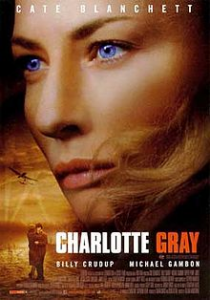 2001 Charlotte Gray filmed in Scotland. In 1942, a young Scot, Charlotte Gray, travels to London to take a job as a medical receptionist for a Harley Street doctor. The story is based on the exploits of Special Operations Executive’s female agents that worked with the French resistance within Vichy France, during World War II. “The Baker Street Irregulars”, after the location of its London headquarters. It was also known as “Churchill’s Secret Army” or the “Ministry of Ungentlemanly Warfare”. For security purposes, various branches, and sometimes the organisation as a whole, were concealed behind names such as the “Joint Technical Board” or the “Inter-Service Research Bureau.”
2001 Charlotte Gray filmed in Scotland. In 1942, a young Scot, Charlotte Gray, travels to London to take a job as a medical receptionist for a Harley Street doctor. The story is based on the exploits of Special Operations Executive’s female agents that worked with the French resistance within Vichy France, during World War II. “The Baker Street Irregulars”, after the location of its London headquarters. It was also known as “Churchill’s Secret Army” or the “Ministry of Ungentlemanly Warfare”. For security purposes, various branches, and sometimes the organisation as a whole, were concealed behind names such as the “Joint Technical Board” or the “Inter-Service Research Bureau.”
Charlotte Gray is a composite of several characters.
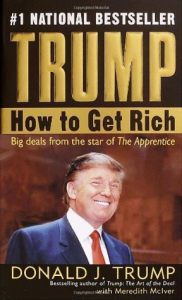 2004 Trump: How to Get Rich. Real estate titan, bestselling author, and TV impresario Donald J. Trump reveals the secrets of his success in this candid and unprecedented book of business wisdom and advice.
2004 Trump: How to Get Rich. Real estate titan, bestselling author, and TV impresario Donald J. Trump reveals the secrets of his success in this candid and unprecedented book of business wisdom and advice.
Donald John Trump, Sr. (clans MacQueen, Macaulay, MacLeod, of Aberdeenshire and Outer Hebrides), (born June 14, 1946). His mother was Mary Anne MacLeod, (born May 10, 1912,– died August 7, 2000), who was married in 1936. Mary Anne was born at Tong, Stornoway, on the Isle of Lewis, off the coast of Scotland, United Kingdom.
Disclaimer: The author of each article published on this web site owns his or her own words. The opinions, beliefs and viewpoints expressed by the various authors and forum participants on this site do not necessarily reflect the opinions, beliefs and viewpoints of Utah Standard News or official policies of the USN and may actually reflect positions that USN actively opposes. No claim in public domain or fair use. © John Choate
Utah Standard News depends on the support of readers like you.
Good Journalism requires time, expertise, passion and money. We know you appreciate the coverage here. Please help us to continue as an alternative news website by becoming a subscriber or making a donation. To learn more about our subscription options or make a donation, click here.
To Advertise on UtahStandardNews.com, please contact us at: ed@utahstandardnews.com.


Comments - No Responses to “December 28th Scots Book of Days. A.D. 2 The Holy Innocents feast day.”
Sure is empty down here...